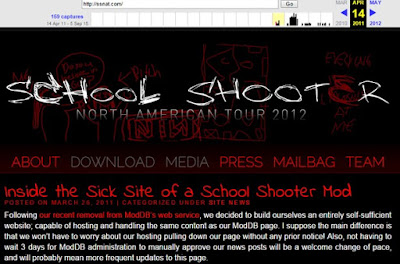Below is a funny example of the potential trouble with citing to a website:
The webpage now pokes fun at both Justice Alito and The New York Times.
The Internet Archive’s “Wayback Machine” has taken a snapshot of the webpage on April 14, 2011 (Justice Alito visited the page March 26, 2011, and the opinion was released in June of that year):
Here's some relevant trivia and my guesses as to why the Court decided to begin hosting material 2005 forward.
All of the Justices serving on the Rehnquist and Roberts Courts have cited to a webpage in a majority opinion. (2)
Justice Souter was the first member of the Supreme Court to include a link to a webpage in an opinion. He did so in a 1996 concurrence. (3)
The 2005 term may have been chosen because it was the first term both Justice Thomas and Justice Breyer include links to the web in majority opinions. (4) But I think it’s more likely that the Court chose 2005 because it was Chief Justice Roberts’s first term on the Court.
Chief Justice Roberts is celebrating his 10th year on the Court, and I can’t think of a better way to celebrate it.
--
1. Brown v. Entertainment Merchants Association, 131 S. Ct. 2729, 2749 n. 14 (2011) (Alito, J., concurring)
2. For a full rundown, see notes 24 and 25 of Raizel Liebler & June Liebert's Something Rotten in the State of Legal Citation: The Life Span of a United States Supreme Court Citation Containing an Internet Link (1996–2010), 15 Yale J. L. & Tech. 273 (2013). It's available at: http://digitalcommons.law.yale.edu/yjolt/vol15/iss2/2
3. Denver Area Educ. Telecomm. Consortium, Inc. v. FCC, 518 U.S. 727, 777 n.4 (1996) (Souter, J., concurring)
4. See, Wagnon v. Prairie Band Potawatomi Nation, 546 U.S. 95, 108 n.3 (2005) and Burlington N. & Santa Fe Ry. v. White, 548 U.S. 53, 65 (2006)




No comments:
Post a Comment